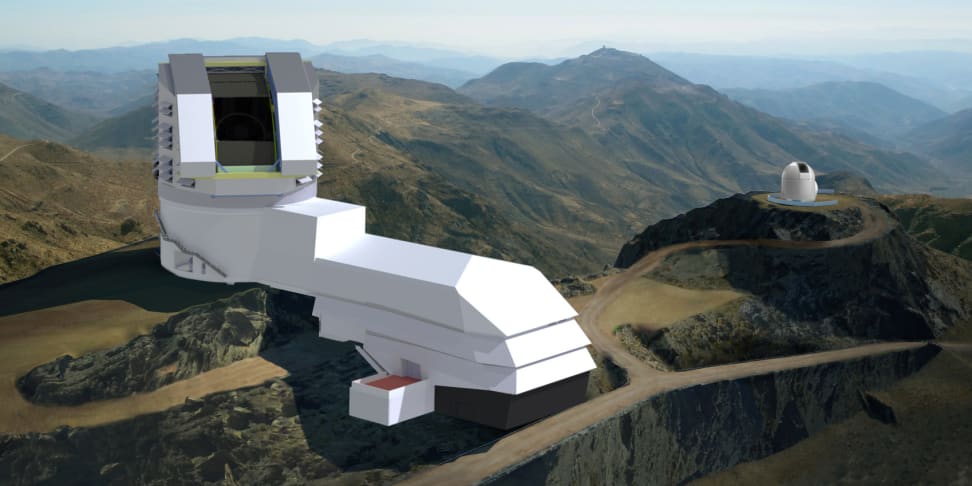Products are chosen independently by our editors. Purchases made through our links may earn us a commission.
If you thought the images captured by the Hubble Space Telescope were mind-blowing, well, prepare to have your brain shattered into a billion subatomic particles.
Earlier this week, the U.S. Department of Energy issued a critical approval for the development of the Large Synoptic Survey Telescope (LSST), which will feature the world's largest digital camera. The approval means that the LSST is on track to begin snapping images of the cosmos in 2022—pictures that will clock in at a mind-boggling 3,200 megapixels.

A cutaway rendering of the Large Synoptic Survey Telescope's 3,200-megapixel camera, set to launch in 2022
Positioned on a mountain ridge in Chile, the car-sized structure will scan the southern skies twice a week, capturing up to 30 terabytes worth of images per night. The data will then be added to an interactive 3D map of the entire known universe.
The prospect of cruising through a digital simulation of the universe is insanely cool, but the team behind the LSST is hoping that the project will also allow for a deeper understanding of the cosmos.
Because the photographs are taken in relatively quick succession, astronomers will have the opportunity to track the movement of celestial bodies like never before. This process could even allow researchers to observe the physical properties of dark energy, one of the biggest mysteries in cosmology today.
The LSST will also help astronomers study objects in our own cosmic neighborhood, like potentially dangerous near-earth asteroids.

An early rendering of the LSST telescope, which will be housed inside of a dome.
Approval by the DoE is the second step in a three-step process. Next summer, the development team will seek an approval for "Critical Decision 3," which will allow actual construction of the camera to begin.

